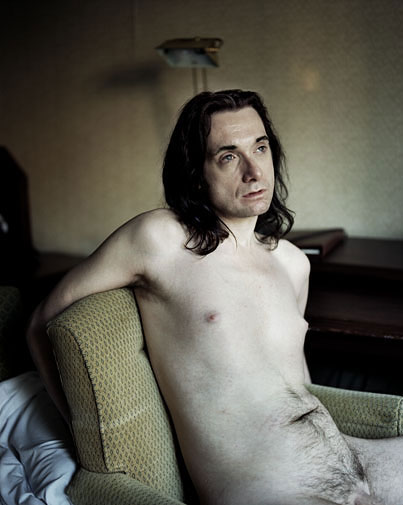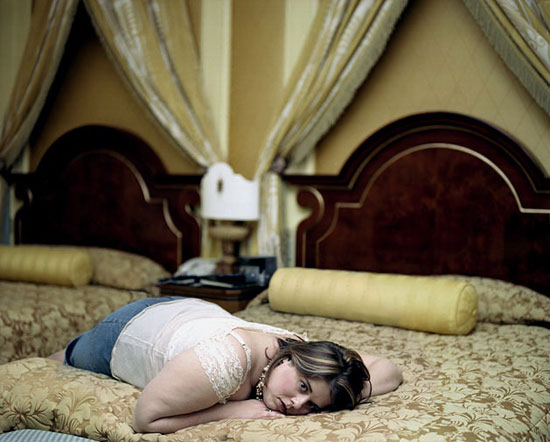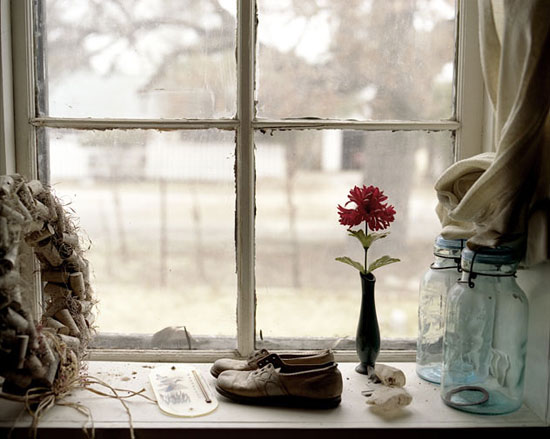A Conversation with Shen Wei

When I saw Shen Wei’s portraits for the first time, I was struck by their expressiveness, which - invariably - had me thinking again about how photographic portraits can be approached - as a photographer, as a mere observer, and also as a subject. It was for that reason that I approached Shen Wei and asked him to talk about his work a little.
Jörg Colberg: In your introduction to “Almost Naked”, you are talking about your interest in how other people deal with their identity. This, of course, is one of the most crucial questions one could possibly ask. There is, of course, quite a bit to identity that does not deal with nakedness, and given Americans’ relative prudishness - compared with most Europeans - trying to tackle identity and nakedness in the US is maybe not the easiest thing to do. Would you mind giving a bit more background than what is contained in the introduction? In particular, I’d be quite interested in what you see as the differences between how people deal with themselves in the US and in China.
Shen Wei: There is a huge difference between how people deal with themselves in the US and China. The political and economic system is very different between China and the US. Chinese people are much more conservative and isolated than Americans. Chinese people are living in a much stricter society; there are rules and rules that came out of thousands years of history. American are democratic and freer, people can be whoever they want to be, at least when they are by themselves. But I have to say, the Chinese are getting much open minded since China has opened her door and exposed the people to some fresh air. There is propaganda in China and there is trashy TV in the US.
JC: You say that Americans can be whoever they want to be, and it seems the Chinese can’t, at least not yet. I’d be curious to learn a little bit more about this. One of the ideas that I had and that I have been told about a lot is that in Communist societies, people split their lives into the public one and their private one. I always thought that at least in their private lives, people could develop quite a bit of freedom for themselves. I seem to be getting from what you’re saying that that’s not true. Or is it?
SW: When I was in high school, everyone had to act the same certain way, dress the same, write the same, there is almost no second choice sometimes, as this happens in some Chinese public company as well. Of course there is always someone trying to be “different” when he acts the way he wants. I think the issue of self expression is getting better in bigger cities like Shanghai or Beijing. I think it will be pretty hard to be self-expressionist in a small town in China.

JC: When you ask people whether you can take their portrait in the nude I’m sure you will explain to them what your project is about. Or maybe not? What do you tell your subjects? And how do you direct them - if you direct them?
SW: Most time I photograph people in their own environments because it is personal, familiar, and comfortable for them. For me as a photographer, the situation becomes rather peculiar, intimate, and doubtful. Once I achieve the trust of the model, I can feel their energy and their desire to be seen and be explored but at the same time still reserve some for themselves. It is in those Almost Naked moments that my subjects are the most exquisite, when things occur, and what generally is not displayed initially in public is exposed. I emotionally and physically strip the sitters when the trust and friendship is built between us. The key to building that trust and friendship is to make them feel at ease with conversation and personalized emotion contact. It can sometimes be psychological, sometimes more sensual, sometimes more or less sincere, depending upon the personality of the sitters and the intimate level of the environment. It is the art of psychology within making art. One may argue that I influence the subjects’ decision to be revealed in the way they appear in my photographs. I would rather say I am the fuse that ignites a fireball waiting to be exposed. For me, the relationship between exhibitionism and voyeurism at this point is intellectual, but not necessary physical. For my portraits, what really matters is to show the sensibility and vulnerability spiritually, bare skin or not, appreciating the emotional nakedness is the aim of this project. Therefore the process of the image making is most fascinating to me. I do not think about my project constantly when I shoot a photo, I think more about the subject in front me. Therefore, I have never felt there is a strong reason to explain the project to my sitters; I like to have a person entering my photography without trying to fit my vision. But I refer most of my models to my website. I usually do not direct my model much, I just capture.

JC: I find that interesting, because when I looked at some of the photos, I thought somebody must have directed the models to assume that particular pose. Given the wide range of poses and results you must be quite happy about how the project is turning out?
SW: I always try many different things while I photograph a person, and I always try to take a different picture every time, so the outcome will not be the same all the time. I also do my final selection very carefully, making sure it does not repeat other pictures.
JC: Where do you find your subjects? Is there any kind of selection involved at your end?
SW: I photograph anyone that I am interested in. For this project, I am more interested in photographing strangers. I found my sitters through friends, the internet, and many of them were approached on location. When you ask people a favor sincerely, you will be very surprised.

JC: In between those portraits you’re showing still life and other scenes. In what relation do they stand to the portraits?
SW: I think the portraits are pretty intense, so the landscapes and still lifes provide a space to catch a breath. Adding landscapes and still lifes to the portraits is to display the influence between nature, people and human behaviors. I am interested in searching the similarity of the emotional levels that exist among landscapes, still lifes and the portraits.
 By
By